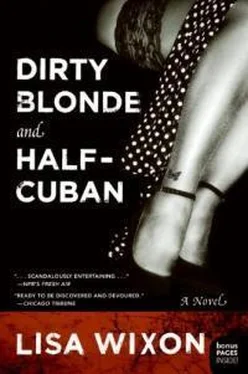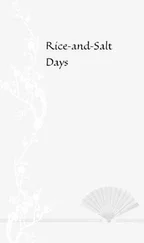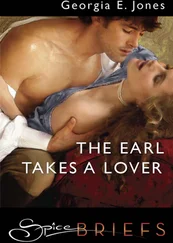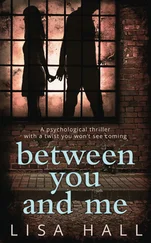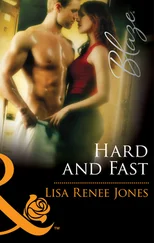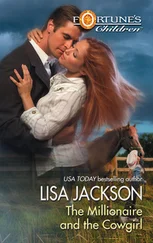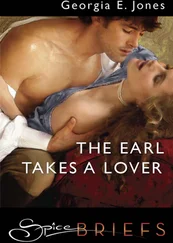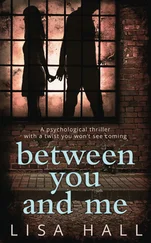Lisa Wixon - Dirty Blonde and Half-Cuban
Здесь есть возможность читать онлайн «Lisa Wixon - Dirty Blonde and Half-Cuban» весь текст электронной книги совершенно бесплатно (целиком полную версию без сокращений). В некоторых случаях можно слушать аудио, скачать через торрент в формате fb2 и присутствует краткое содержание. Жанр: Современная проза, на английском языке. Описание произведения, (предисловие) а так же отзывы посетителей доступны на портале библиотеки ЛибКат.
- Название:Dirty Blonde and Half-Cuban
- Автор:
- Жанр:
- Год:неизвестен
- ISBN:нет данных
- Рейтинг книги:4 / 5. Голосов: 1
-
Избранное:Добавить в избранное
- Отзывы:
-
Ваша оценка:
- 80
- 1
- 2
- 3
- 4
- 5
Dirty Blonde and Half-Cuban: краткое содержание, описание и аннотация
Предлагаем к чтению аннотацию, описание, краткое содержание или предисловие (зависит от того, что написал сам автор книги «Dirty Blonde and Half-Cuban»). Если вы не нашли необходимую информацию о книге — напишите в комментариях, мы постараемся отыскать её.
Dirty Blonde and Half-Cuban — читать онлайн бесплатно полную книгу (весь текст) целиком
Ниже представлен текст книги, разбитый по страницам. Система сохранения места последней прочитанной страницы, позволяет с удобством читать онлайн бесплатно книгу «Dirty Blonde and Half-Cuban», без необходимости каждый раз заново искать на чём Вы остановились. Поставьте закладку, и сможете в любой момент перейти на страницу, на которой закончили чтение.
Интервал:
Закладка:
In Cuba, women with foreigners aren’t arrested for prostitution. Instead, they’re written up for other infractions—whatever fiction the police invent. When three delinquencies land in her police file, the girl is usually sent to prison. Hundreds of Cuban women are said to be in jail for having relations with foreigners, yet technically they’re serving time for other crimes. Girls who work the sleazeball joints, the ones who behave like common prostitutes, are especially targeted by the police, who either demand a cut, a freebie, or both. I’m betting the petite ballerina is safer being with just one foreigner, with Richard. The government doesn’t outright encourage these long-term liaisons, but certainly looks the other way at most of them, knowing repeat tourists, and those who wire money regularly, help boost a desperately sagging economy.
“You going to tell me what’s going on?” I ask.
“Richard is cursed,” Daya says quietly. Curses are the currency, the moneda nacional,in which many people trade, and are made formidable by Santería, a religion brought over by Africans and practiced, on some scale, by much of the population.
“Why is he cursed?” I ask patiently.
She whispers in my ear. “His pingadoesn’t go down, it’s stuck on up. He comes but he’s still hard, and he does the llello”—cocaine—“and rum and he’s so oldbut he’s still duro,so I know it’s a curse.” She’s wild-eyed now. “He wants it all the time and his pingais never soft, so I poured a drink on it, to cool it down, but it stayed up, and I got scared.” The teen dancer’s thumb goes back in her mouth.
If she wasn’t near tears, I’m certain I’d have howled with laughter. “Daya, have you noticed Richard take any pills?”
She thinks about it and fumbles in her bra. Daya offers a blue tablet, slightly damp from sweat.
“He wanted me to take one too. I spit it out when he wasn’t looking.” I explain to Daya the wonders of Viagra, though it takes a few minutes to convince her most of the world knows of its existence. Relief touches her face.
“You’re crazy,” she says, and then hugs me. Cubans rarely say “thank you” and I take the embrace to mean just that.
29
T he U.S. InterestsSection, designed by Americans in 1953, is a slick seven-story building on the Malecón. Its mirrored exterior reflects and refracts a Caribbean sun, formidably luminous, a retina-burning beacon of intimidation.
In 1961, during his final days in office, President Eisenhower withdrew the U.S. diplomatic corps from Havana. A few months later, under a nascent Kennedy administration, the Bay of Pigs was invaded by CIA-trained troops. In further polarizing relations, the following year, American spy planes photographed nuclear missiles at hidden sites on the island’s northern shores, ones with enough range to obliterate America’s Eastern Seaboard.
But optimism eventually prevailed. At the behest of President Carter—who’d ordered the embassy dusted off, debugged, and resettled after a sixteen-year vacancy—the corps returned under the protection of the neutral Swiss. Embassy functions were downgraded to a charge d’affairs level, which is where they remain today.
The newly arrived norteamericanos,having been long absent from Havana, were treated kindly yet with curiosity, and observed at a distance.
Common in Havana were those from the USSR, the island’s patron saint and the bête noire of America. My mother remembered that lessons in Russian permeated the airwaves, and Cubans—natural linguists—proudly practiced the Slavic tongue in the streets and the markets.
The U.S. Interests Section opened in 1977 to little fanfare. John reported for work in September of that year and was charged with dispensing the ethos of American democracy to the Cuban public.
For John, it was the career move of a lifetime.
My mother, however, was less than delighted, believing John embraced the polemics of the job with too much gusto and with too little respect for Cuban sovereignty.
It was another of the many fissures in an already embattled marriage.
MY MOTHER FIRST met José Antonio under the yellow-and-red banner of the Spanish embassy, housed in an Art Nouveau palace in Old Havana.
The Spanish—newly reestablished in Cuba, and basking in a post-Franco glow—hosted the U.S. diplomatic corps’ coming-out party on neutral territory. Russians, Cubans, and Americans attended. To dilute the combatants, the Spanish invited the Swedes, the French, and the Danish.
My mother wore a black cocktail dress, pearls that once belonged to her grandmother, and a fluid silk Spanish shawl she’d bought in Madrid. She believed the palace to be the most beautiful of all of Havana’s inspired architecture, and turned to whisper the sentiment in John’s ear.
But it was José Antonio who was listening.
Flustered by the unintended intimacy, my mother scanned the room for John, and not finding him, coolly accepted José Antonio’s introduction. A Cuban translator who’d been stationed in Moscow and Africa, José Antonio was serving as an interpreter for his Soviet bosses. Hearing this, my mother stiffened and introduced herself as the wife of an American diplomat.
“Don’t be upset,” said José Antonio in a low and mischievous voice. “No one here likes the Russians, either.”
What didn’t need to be clarified, however, was the intensity of the physical chemistry between them.
Later in the evening, partygoers were seated in a semicircle around a slightly elevated wooden stage. A lovely, lithe flamenco dancer was illuminated by a single light, and accompanied by a master guitarist and handclapping percussionist. My mother’s eyes were glued to the dancer’s feet and the sinewy musculature of her body, one that responded with sensuality to the complex rhythms.
My mother felt his eyes burning her skin. She strained to see through the darkened audience and found José Antonio sitting directly across from her. Despite the dazzling artistry on the stage between them, José Antonio was staring at no one but her, a path obstructed only by the occasional blur of the dancer’s ruffled, swirling red skirt.
DURING THE ENSUING months, my mother and José Antonio met accidentally nearly a half dozen times in galleries, at parties, and in restaurants. My mother refused to acknowledge the attraction between them, or the irrefutability of José Antonio’s charm.
She carefully noted their encounters in her journal, and part of her secretly hoped each outing would bring another round of clandestine flirtation with the handsome Cuban. Her fantasies grew in proportion to the deepening depression of her marriage, which was slipping, a rung at a time, into oblivion.
On the nights John had promised to be by her side, my mother sat alone among palm trees and the heady, aromatic breezes of a Cuban night, starry-skied and voluptuous, a symphony of heavenly beauty put on each evening with the smooth perfection of a long-running Broadway show.
John was increasingly obsessed with his career, and worked all hours. My mother believed his ambition was partly rooted in shame, in the latent failure of his body to conceive a child. She told him it wasn’t important. But in the margins of her journal, my mother etched the names of unborn babies: John Jr. for a boy; and for a girl, Alysia.
My mother rang in 1978 at a diplomats’ New Year’s Eve gala at the Hotel Nacional. She did so alone, as John had gone to Washington for work. My mother remembered arriving at the manicured grounds after midnight, and vowed to stay only a short time, making a brief social appearance before returning to the emptiness of her Miramar home. Slipping off her high heels, she pattered through the downy carpeting of green lawn, making way for the peacocks and antique cannons.
Читать дальшеИнтервал:
Закладка:
Похожие книги на «Dirty Blonde and Half-Cuban»
Представляем Вашему вниманию похожие книги на «Dirty Blonde and Half-Cuban» списком для выбора. Мы отобрали схожую по названию и смыслу литературу в надежде предоставить читателям больше вариантов отыскать новые, интересные, ещё непрочитанные произведения.
Обсуждение, отзывы о книге «Dirty Blonde and Half-Cuban» и просто собственные мнения читателей. Оставьте ваши комментарии, напишите, что Вы думаете о произведении, его смысле или главных героях. Укажите что конкретно понравилось, а что нет, и почему Вы так считаете.
